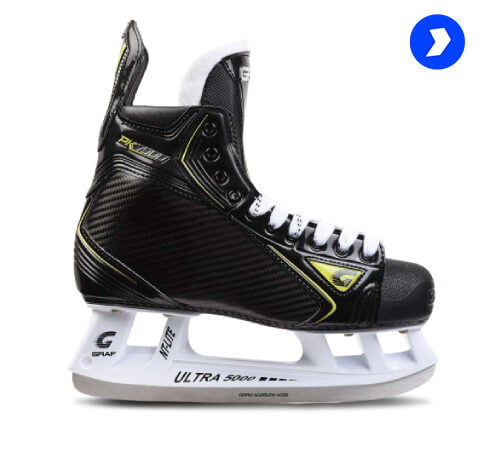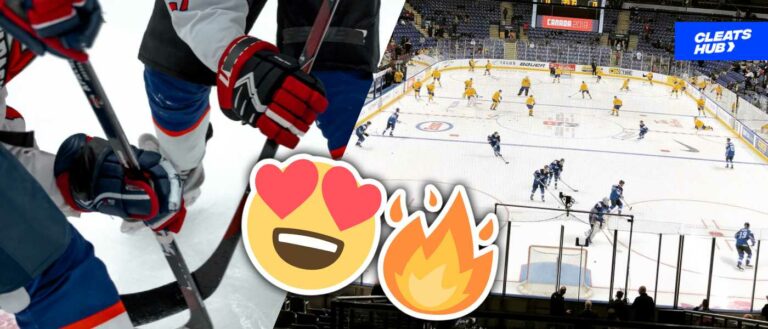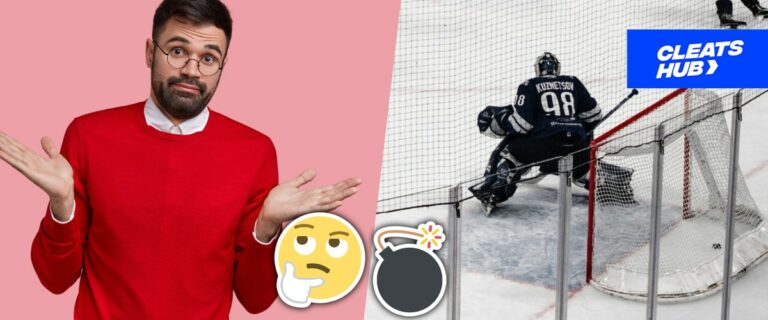How Cold Are Ice Hockey Arenas? What To Wear
Are you planning on going to your first ice hockey game? Or are you a regular attendee of ice hockey games? Whichever category you fall under, an important thing you should consider when attending a live match is the clothing you wear. This is because ice hockey arenas are very cold and stay in a low, stable temperature range throughout the game.
It doesn’t matter if this is your first time or your hundredth time attending a live match, you could always learn something new. Continue reading hereunder for tips and tricks that can make you feel as cozy as possible in an ice hockey arena.
Average Temperature of an Ice Hockey Arena
For the benefit of skaters, ice hockey rinks are kept at a frigid temperature. The issue is that some viewers might find the weather to be too cold and may not be able to handle it.
To NHL regulates the temperature in its arenas within a certain range to address this issue. The temperature of the ice and the stadium are two of the main components of the hockey arena that are controlled by technicians.
Therefore, this begs the question: How chilly are ice hockey rinks? The specialists in charge of maintaining the stadium’s ambient temperature keep it between the ranges of sixty and sixty-five Fahrenheit (60°F – 65°F). On the Celsius scale, it is from 15°C to 18°C.
The issue here is that while recreational arenas (local arenas) are sometimes notorious for being colder, the temperature stated only pertains to NHL and other professional hockey arenas. Typically, outdoor rinks can get as cold as 55F (12C) and this is because the temperature is not in the control of technicians.
Why Are Ice Hockey Arena So Cold?
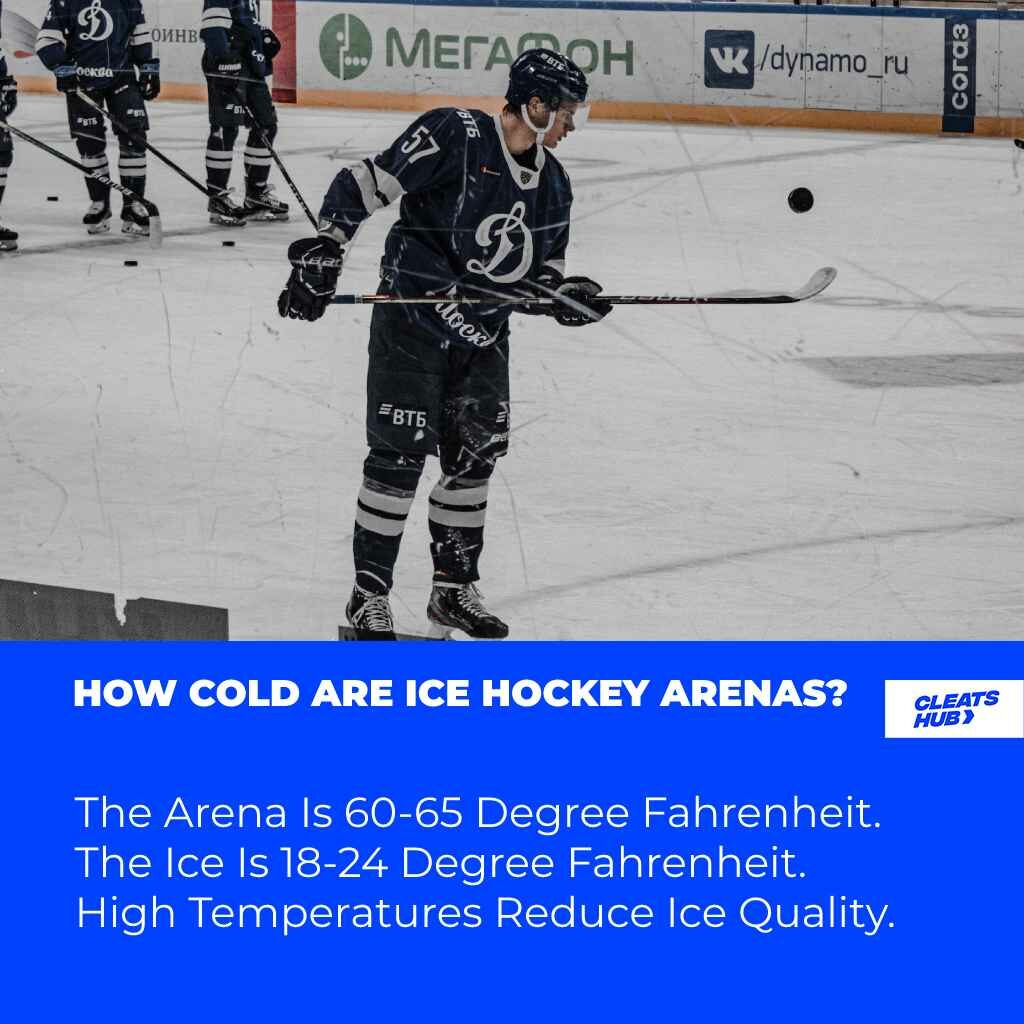
In order to preserve the condition of the ice, as I previously mentioned, ice hockey arenas are kept cool. However, what does this mean?
Thus, let me explain! At 32 F (0 C), ice starts to form. To play hockey, however, ice must be at least an inch thick and between 18 and 24 degrees Fahrenheit (-8 to -4 degrees Celsius). Bad skating ice will result if the ice temperature rises over this range.
It is more difficult for players to finish passes on bad ice, which slows down the game’s pace. Also, the ice surface becomes uneven as a result, and occasionally a puddle can emerge as it melts.
In a 1991 game against the LA Kings, John Vanbiesbrouck, the New York Rangers’ goaltender, encountered a similar circumstance. He compared the ice’s appearance to a puddle when reflecting on the incident.
Recreational facilities typically have ice of a higher quality than ice hockey rinks used by professionals. This is due to the fact that they are less packed and less populous and thus colder than NHL arenas.
The venue is frequently at its coldest possible temperature prior to the commencement of a game (60F or 15C). yet why?
An arena can become quite heated very quickly with 18,000 fans inside. Therefore, technicians therefore maintain a very low temperature before the start of the game so that it won’t climb above the limit when the crowd rushes in. Together with that, it makes it simpler for them to control the adjustments.
What To Wear To Ice Hockey Games
Now, what kind of attire is appropriate for visiting an ice hockey rink? The type of arena determines the response to this question.
What I mean is that you won’t require the same attire for a professional arena as you would for a recreational one. Professional hockey stadiums typically have better air cooling systems, a huge audience that warms the air, and a wider temperature range. As a result, they are typically warmer (60F to 65F).
It will be sufficient to wear a lightweight jacket, hoodie, jumper, cardigan, or sweatshirt—preferably one from your team. You may easily buy your team’s sweatshirt if you don’t already have one at any of the stands located around the arena or online via the NHL Official Website. As a general rule, dress in something you’d wear to a typical movie theater when it’s going to be cold.
For instance, wearing jean pants, a T-shirt, and your team’s sweater over the T-shirts is a typical outfit for both men and women. It’s straightforward and will help you fit in with the crowd with ease.
Due to their less advanced air conditioning systems and typically smaller attendance, non-professional hockey arenas have trouble using this method. In situations like this, a thick jacket with hand and head warmers will be a preferable choice.
A blanket can also be helpful if you’re bringing your kids along. It will contribute to supplying additional heat that youngsters need while in the arena. When the arena chair is cold and rough, blankets can also be used. Before sitting down, place a blanket on the chair to provide some insulation.
Summary
- Clothing depends on the type of arena;
- Professional hockey arenas do not require heavy clothing as recreational arenas; and
- A pair of jean trousers and an ice hockey sweatshirt is a common dress code.
How To Keep Warm In Ice Hockey Arena
There are several tips to ensure that you don’t succumb to the cold atmosphere in hockey arenas. Some of them are :
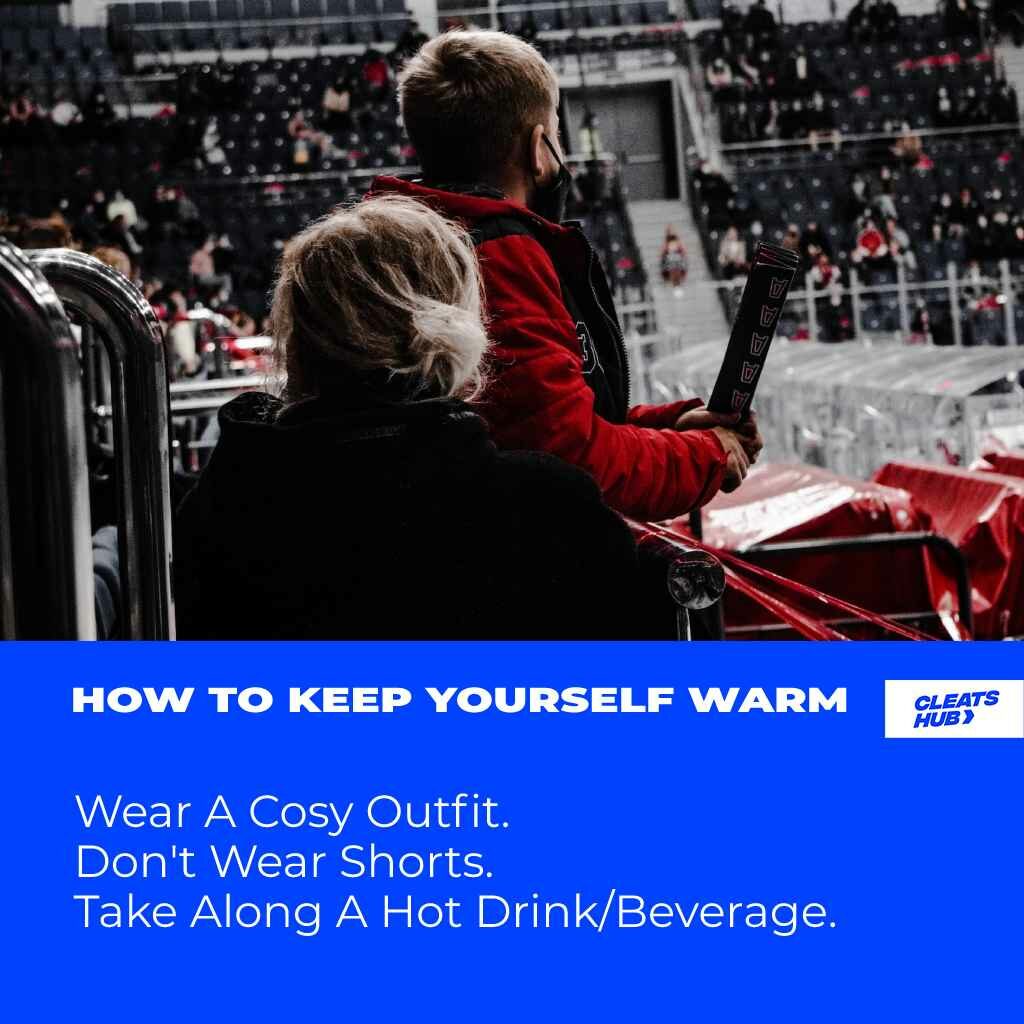
Wear Clothing that can Conserve your Body Heat
- Preferably do not go with a t-shirt, light clothing, armless or anything that exposes your arms.
Do not Wear Shorts to Ice Hockey Arenas
- This is because the legs are more vulnerable to cold than other parts of the body.
- Exposing the legs to cold will make your body temperature drop faster.
Take a Blanket as a Backup Measure
- Ice hockey games could take over 2 hours, and during this period, the body temperature can drop drastically.
- Taking a blanket can be a lifesaver giving you the ability to enjoy the game while feeling cosy.
Take Something Hot With You
- A good trick to keeping warm in the coldest of arenas is to have a hot drink.
- Some areas in the stadium have stands that offer a variety of food items and drinks.
- Some of the drinks may range from coffee to tea and hot chocolate beverages.
- Purchasing a cup of hot beverage can help your body warm up.
Seat Farther Away from the Ice and Ice Condition Systems
- The closer you are to the ice the colder the air around you. This is because the ice has lower temperatures of 18°F to 24°F when compared to the auditorium temperature.
- Also, it is a fact that cold air goes down while warm air goes up. This means staying in the top back seats gives you a better chance of staying warm.
- The air conditioning system is also distributed around the arena, when picking a seat, try and ensure you are not directly under an air conditioning system.
Sit Close to the Crowd
- Seating with other hockey fans will increase the air temperature through the collective heat emanating from their bodies. This provides extra warmth to keep you comfy.
Caps or Head Warmers
- In certain cases, as in outdoor arenas, a cap, scarf or head warmer can really come in handy. It provides warmth to the head and ears.
How Do Ice Hockey Arenas Regulate The Temperature?

Every ice hockey rink is equipped with HVAC systems and pipes to maintain a steady, low temperature. Arena temperatures remain the same whether an ice hockey event is held in the summer or the winter.
Why does this matter?
During the winter, there is typically no difference in temperature between the outside and interior of the arena. The arenas are typically warmer than the outside most of the time. In some places, the wintertime temperature is typically below zero degrees Celsius, whereas the NHL recommends keeping it between 15 and 18 degrees.
In situations like this, not much cooling is required to retain the ice, and heaters are installed to maintain the temperature of the air around the chairs at 60 to 65 degrees.
The opposite is true during the summer when the arena is noticeably warmer outside than inside. To prevent the ice from melting, technicians typically need to turn up the air conditioning system on the ice.
Here’s an intriguing piece of advice: whether you visit an ice hockey arena in the summer or the winter, it will still be chilly. Hence, be sure you bring a jacket or sweater.
Why Are Ice Hockey Players Not Cold?
Although it is colder outside the arena than it is outside the ice rink, the player doesn’t notice the difference because of the nature of the game. Players produce enough heat to be warm because they are continually skating and moving quickly.
The attire the players wear is an added benefit. Their clothing, which is comprised of Kevlar, glass, and carbon, can keep them warm on the chilly ice.
Conclusion
One thing is sure, in an ice hockey arena you will have the experience of your life. The feeling of watching a live hockey game is unrivaled. The energy that resonates in the crowd is unreal. If you plan on attending your first live ice hockey game, I wish you good luck. Stay warm and stay safe! Thank you for reading.
Psstt…. The Top Performing Cleats




